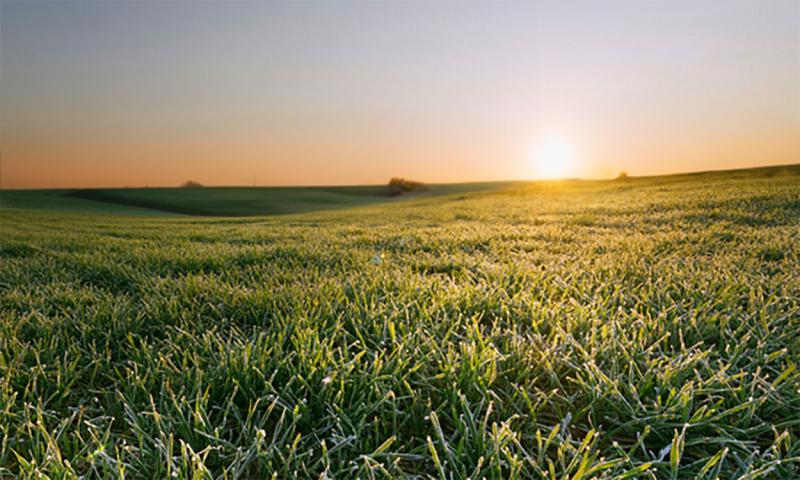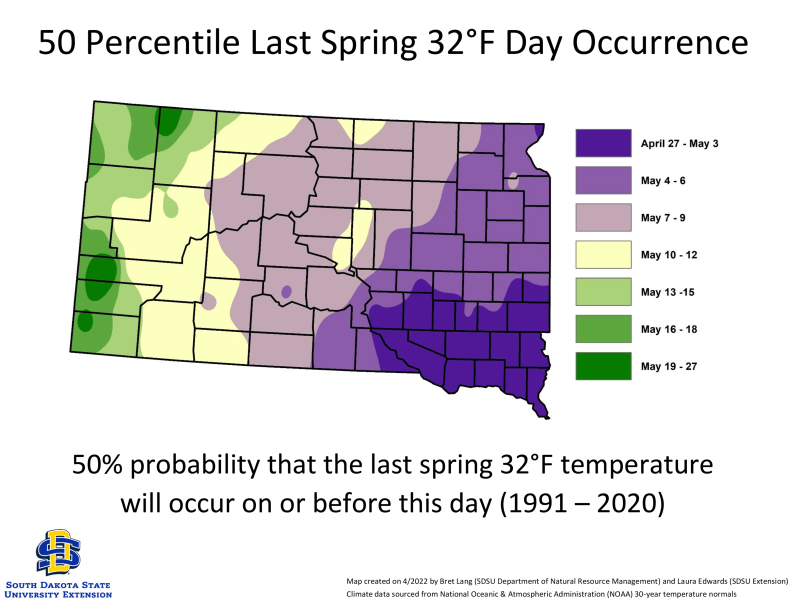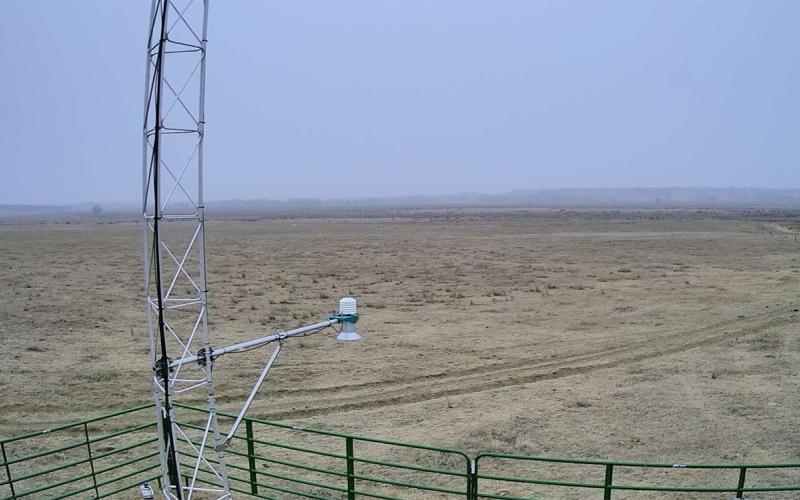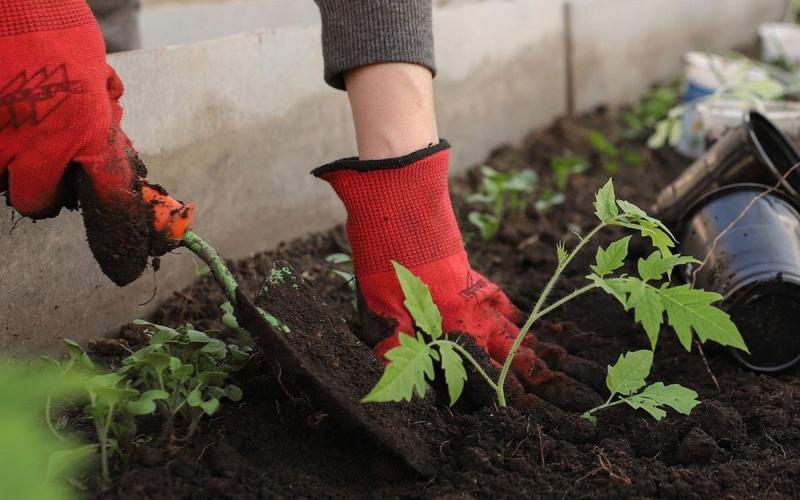
Written collaboratively by Laura Edwards and Bret Lang.
The last occurrence of frost in the spring is a notable date for both agriculture and horticulture. Around this date, soils are warming in preparation for spring planting, perennials will emerge, and buds will burst on trees. Most importantly, after this date is when we avoid the risk of frost damage for vegetation that is above ground.
There is a lot of variability in the date of the last spring frost from year to year. For example, an otherwise warm spring could have one clear, calm night with rapid cooling below 32 degrees Fahrenheit in late May. Or an early warm-up in March and a steady string of warm temperatures through April and May could see the last frost occur much earlier than typical.
Overlay this variability with the long-term trend of warming temperatures and, as a result, the date of the last spring frost is generally trending towards earlier dates. Additionally, the frost-free season (the number of days between the last spring frost and first fall frost) is getting longer.
South Dakota Freeze/Frost Date Maps

The map in Figure 1 uses a recent period of 30 years of daily climate data (1991-2020) from stations across South Dakota. Using a minimum of 30 years ensures that the statistics are solid. Using the most-recent three decades captures the changes in temperature that have occurred.
The last date of a minimum temperature of 32 degrees Fahrenheit or below was noted. The map below shows the median (50th percentile) or typical last date for 32 degrees Fahrenheit or colder in the spring season. On the Mesonet at SDState website, there are maps of 10th percentile (very early dates of last frost) to 90th percentile (very late dates of last frost).
For some plants, trees, or crops, a critically cold temperature threshold may be warmer or colder than 32 degrees Fahrenheit. In that case, there are also maps on the frost/freeze website for the temperatures of 24, 28, 36, and 38 degrees Fahrenehit.


